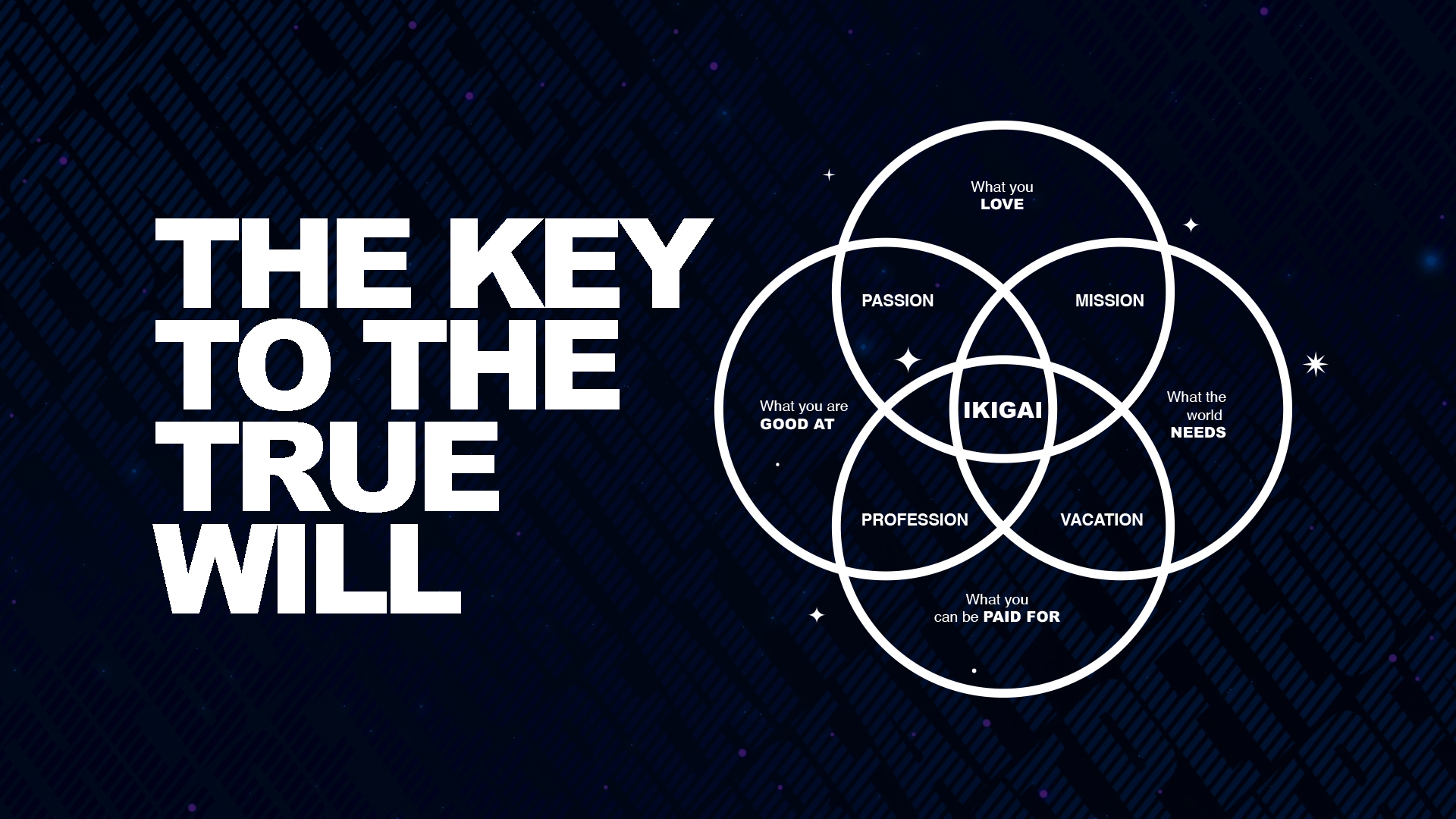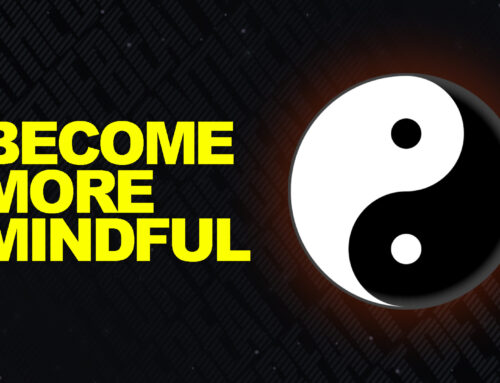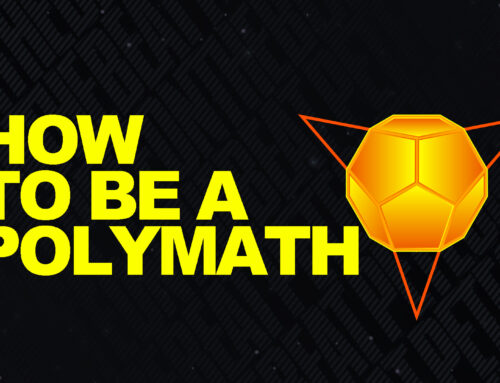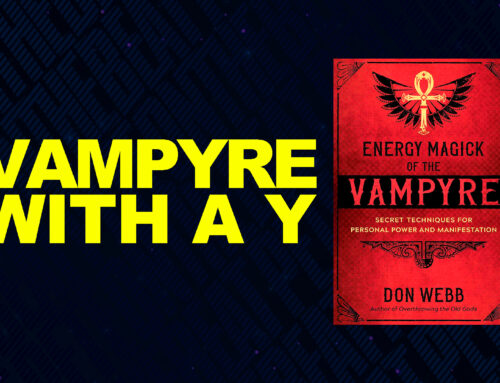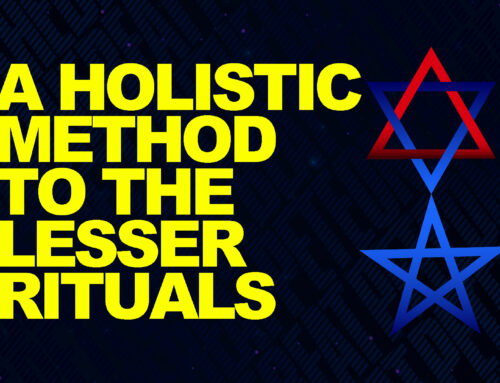Introduction
As a word concept from Okinawa, Japan, Ikigai describes one’s life purpose and reason for being. The term comprises: ‘Iki,’ life, and ‘gai,’ worth. It originates from ‘Ikikai,’ or ‘life shell,’ meaning ‘life’s worth.’ Hector Garcia and Francesc Miralles believe Ikigiai is one’s ‘fuel for life’ and reason for getting out of bed Tim Tamashiro — that it is also a map. The more you follow it, the more you discover your gifts. The more you share those with the world, the more rewarded you get.
Directions
The concept of Ikigai gives four directions, greatly complementing ‘Do What Thou Wilt.’
- Do what you love.
- Do what you are good at
- Do what the world needs.
- Do what you can be rewarded for.
Besides your current place, they show where you have the potential to go. Following them produces immediate rewards, as the directions point to your superpower: ‘your Ikigai.’
Like the True Will, the Ikigai is not static. It’s a dynamic sequence of experiences flowing in a perpetual change. It can alter directions based on your journey. Still, it permeates your whole existence as a continual self-discovery.
Exotic as the Iris Color
The True Will is unique to the individual. At the same time, the Ikigai is as exotic as one’s iris color. Like following the True Will demands reinvention, embarrassing your Ikigai implies embracing change, like in the Fortune card. Yet, these aren’t externally imposed. They are driven by innermost curiosity and desire to live, express, and become.
Levels of Ikigai
The four directions can be organized into ‘Half,’ and ‘Full Ikigai.’ Encompassing the former two, the first includes your natural talents, passions, and inclinations driven by the same desire and curiosity. Following your Ikigai implies mastering those, which resonates with Thelema’s notion of Masters following their True Will. Completing the circle, the full Ikigai encompasses all four. In a full Ikigai, the first two contribute to society, rewarding you back.
Gifts
Each person has gifts, begging them to be put to use. Understanding your Ikigai is how you can accomplish this. To help with that, the way-finder Mark Winn provides a modern approach. This is based on a Venn diagram displaying the Ikigai emerging in the four directions’ center. Winn explains that doing your Ikigai is essential for achieving your long-term purpose. Hence, the same may be viewed as the tool, keeping you followig your True Will. Especially considering this isn’t a straight line but more of a curve.
Lego Blocks
Tamashiro says Life is like a dark room where we walk barefoot, stepping on memories like Lego blocks.
“We go through Life like we are barefoot in a monstrous pitch-black room, with a few random pieces of Lego scattered sparingly throughout. Our task is to find our way through the room by learning a little more about the room every day. With age and wisdom, we learn to avoid stepping on the pieces of Lego. The Legos are the painful parts of Life. The rest of the room is everyday Life.”
Comment
I wonder if this inspired the following from Don Webb’s How to Become a Modern Magus.
“if you don’t make choices, the memory is like a Lego piece on the floor — and you won’t like stepping on it because you didn’t put it away…”
Not Necessarily Rational
The Ikigai may not be the most rational path, i.e., achieving good grades, getting into college, and working for 40 years to build financial stability. It is a path of purpose and fulfillment that are (also) part of the reward. Yet, the more it is followed, the more ways to support oneself arise.
A Side Hustle
Since monetizing the Ikigai doesn’t always happen immediately, you should start with the first two, devoting as much free time as possible to them. According to Tamashiro, this ideally is one-third of your day. Then you hopefully turn that into a side hustle, which perhaps grows into something more.
No Sacrifices
While this is seldom discussed in magickal books, I believe your True Will must include building financial freedom, especially in the current era, which, as communicated by the Hanged Man card, is no longer one of sacrifice. And as Regardie stressed, that’s a huge magickal accomplishment.
The Hermit
The more you do your Ikikai, the more you have a beacon of light guiding you into the darkness. This paves the way to fulfilling your purpose and achieving success without stumbling in memories. Think of Dr Martin Luther King’s saying we only need to see the next step, not the whole staircase. Now look at the Hermit card. Surrounded by darkness, the Hermit confidently follows their path, enlightened by the macrocosmic star, which is the divine.
Gifts
Doing your Ikigai demands developing your natural strengths and talents. The more you do so, the more you crush it in Life. The more you get perplexed trying to fix weaknesses, the less exciting Life begins, and the slower progress becomes. This goes hand-in-hand with the notion that the True Will has much to do with your genetic predispositions. There’s a significant overlap between one’s passions and interests and the Ikigai. And the same applies to the True Will.
Success
Your Ikigai includes getting rewarded for doing it. On the contrary, obsessing over material success is a colossal mistake. Tamashiro regards not doing what you want to buy the freedom to do it when old as the most dangerous risk. Instead, live fully by giving up the lust for material results and (really) make yourself fulfilled. Apparently, this isn’t too dissimilar to doing Magick without lusting for results. More on that by the end of the video.
Delusions
One way to do that is getting attuned to your child self’s delusions. Peculiar to you, such notions keep you connected to what Gurdjieff calls essence. Your inner child’s reality tunnel is the gate to your Ikigai. It is doing what you want now and extending into the four directions, which, IMHO, describes “Do What Thou Wilt”. Let me know if you agree. And if you want to strengthen this connection, work with the Moon/Yesod extensively.
Enriching Your Life
What enriches Life are things like:
- Reasonable Goal Setting
- Regular Acts of Kindness
- Practicing Mindfulness
- Meditation
- Gratitude
- Proper Sleep and Healthy Lifestyle.
For occultists, this includes daily rituals. Regarding the Ikigai, they enhance your perception of what Garcia and Miralles call ‘clues,’ keeping you on track. They can also extract that which is essential for the True Will. On the contrary, particular crafts require money. Music production, content creation, filmmaking, etc. — they all need finances. So make sure to keep that in mind.
A Chance to Live
Appreciating the chance to live may be the starting point of embracing your Ikigai. Here and now is the opportunity to make the things you want to happen. As my viewers know, there’s no greater chance to accomplish anything in Assiah than in this reincarnation.
Mindfulness
Mindfulness meditation allows us to understand each moment as it happens without judgment. It increases awareness of bad habits to break. Also, what you are good at, what brings you joy, and how to align yourself with them. Mindfulness helps to recognize your place in the world and your contribution. My last video on getting into Magick addresses the best ways to start it: meditation and bullet journaling. And, to increase mindfulness further, work extensively with Jupiter/Chessed.
Conditioning
Schooling and parenting can be a massive obstacle in finding your Ikigai. Often, people move through Life with many ‘shoulds’ and ‘shouldn’t.’ They have pre-determined goals regarding ways of living. In such cases, adopting a half Ikigai ASAP is critical. As mentioned, this can be a side hobby turning into a fully monetized life purpose. You are not your job; you are your work, and that’s the Ikigai. If you are not pursuing it, you are deliberately planning to be miserable and less of what you are capable of, says Tamashiro. As Dan Koe says, if you have 8 hours to build someone else’s dreams, you can devote at least one to build yours.
On the contrary, having your most authentic passions aligned with those expectations is also a way to live your Ikigai. Whatever the case, Magick comes to the rescue, showing you (exactly) who you are. And as Crowley says in Book 4:
“A man whose conscious will is at odds with his True Will is wasting his strength. He cannot hope to influence his environment efficiently… (…) boy’s instinct may tell him to go to sea, while his parents insist on his becoming a doctor. In such a case, he will be both unsuccessful and unhappy in medicine….”
Diversity in Order
Ikigai is also ‘kindness’ and letting people be what they are. Tamashiro explains that the ‘thrivers’ we admire are usually the ‘different.’ They create their beliefs and rules, carrying their Ikigai. They live on their own terms, attuned to that, and do nothing else. (78-86) They are their own persons, taking ownership and embracing permanent growth. They have what Angela Duckworth defines as grit: the passion and perseverance for long-term goals, the Ikigai. Such people are on one-person journeys, enabling them to provide value to others. Think of Steve Jobs, who was heavily influenced by Japanese culture. Also of the Bezzos and Musks – they expand the ‘collective consciousness’ by taking us to Mars, similarly to what Jack Parsons did. They understand that no one but the person can realize Life better than themselves.
“Your potential of a fully realized life was granted to you the moment you were born…”
Finding Your Ikigai
Finding your Ikigai requires experimentation and looking into the depths of your Soul. Obtaining clarity through mindfulness, ritual, philosophy, science, and Life allows for splitting all experiences into two categories. Ikigai and Non-Ikigai (106). And if you think about it, this is both Stoic and Thelemic. Especially considering Marcus Aurelius’s notion that removing the non-essential doubles the impact of the essential by giving more time and tranquility. Also, the True Will is a ‘perfect sequence of events.’ Given that, your Ikigai is about doing and experiencing more of you.
The Word
It is said one’s Ikigai can be conveyed by a word. Examples include: ‘to dazzle,’ ‘to mesmerize,’ ‘to delight,’ and ‘to excel.’ This word contains the essence of one’s Ikigai, serving as their north star. Apparently, this compliments the notion that the HGA provides the seeker with a word. This word’s meaning extends beyond a single career path or craft, yet it radiates from everything you put your Soul into… And it can be found all across your work if you are creative.
Logotherapy
Positive psychology helps find your Ikigai. It tells you where to invest effort, discovering your uniqueness.
Given that, two methods find immense application. The first is Victor Frankl’s Logotherapy. It is inspired by Frankl’s own search for meaning and purpose. Logotherapy seeks to help people find meaning in their lives and satisfy their moral principles.
A Reason to Live
Frankl commonly asked his patients: ‘Why they wouldn’t commit suicide?’ Answering this helps people find solid reasons to live, unraveling what they should be (actually) doing. Unlike psychoanalysis, which focuses on the past, Logotherapy looks into the future. It helps people find the meaning in their lives based on a point in time. As covered, the Ikigai is not static. It rarely remains the same across one’s Life, and focusing on the past often prevents evolving. This keeps one in what Logotherapy describes as an ‘existential void.’ Frankl says we all have unique life purposes and reasons for being. Yet they are something we discover, not something we create, as prescribed by Sartre.
Morita Therapy
In the decade when Frankle developed Logotherapy, Japanese psychiatrist and Zenbuddhist Shoma Morita created his purpose-centered therapy. Called Morita therapy, the same draws from various Zen practices, especially Naikan Meditation. The last increases clarity and a sense of responsibility by making you reflect on three questions:
- What I’ve received from a person?
- What have I given to that person?
- What problems have I caused them?
The first step is accepting one’s full spectrum of thoughts and emotions. This is also the start of numerous magickal practices. Morita believed that no matter how disturbing they could be, our feelings would change due to our actions. Yet, he steps things further, advocating creating new emotions (aligned with our Ikigai) and learning to experience them frequently similarly to building habits.
Comment
IMHO, this sounds like transmitting impulses from Malkuth to Yesod to improve the functioning and communication of Netzach and Hod. Let me know if you agree.
Morita therapy has three basic principles.
- ‘Accept your feelings:’ This is viewing them as weather or sky clouds coming and passing. I guess I was onto something when creating my ‘Emotional Timelapse‘ track artwork 6 years ago.
- ‘Do what you should be doing:’ This doesn’t mean intellectualizing the situation or treating symptoms. Instead, it’s about grounding yourself in what you do and learning through experiences.
- ‘Discover your life’s purpose:’ This one implies constantly asking ourselves what we should be really doing right now. And through that, following the Ikigai. As Marcus Aurelius said,
“Ask yourself at every moment. Is this necessary?
Flow
While magick and therapy can help you do your Ikigai, there’s something more accessible. Namely, the so-called flow states. Mihaly Csikszentmihalyi describes Flow as being completely immersed into something we do, just for the sake of it. It is the pleasure, delight, and creativity of immersing in Life. Think of Love under Will, and perhaps check my videos on Thelema. According to Garcia and Miralles:
“There’s no one magic recipe for finding happiness, for living, according to your Ikigai, but one key ingredient is the ability to reach this state of flow and through this state to have an ‘optimal experience.’
— P.56
Self-Transcendence
Focus is how you enter and stay in Flow. Distraction is how you get out of it. The more we focus on a task, the more we achieve Flow. The more that happens, the more the ego steps back. Being one with the task, we are in a union with reality, operating from higher states of being. Focus is how you connect the deeper aspects of one’s self and the same of reality. It is a precursor to a passionate interaction between Nuit and Hadit. With magick, you can facilitate your focus based on intent.
Achieving Flow
One part of achieving such experiences is focusing on the activities that bring us pleasure in the long term. This implies using what Kelly McGonigal defines as ‘I want Power,’ and eliminating immediate pleasure or dopamine triggered through drugs, booze, porn, junk food, etc. Csikszentmihalyi describes Flow as:
“…the state in which people are so involved in an activity that nothing else seems to matter; the experience itself is so enjoyable that people will do it even at a great cost for the sheer sake of doing it…”
“One of the most frequently mentioned dimensions of the flow experience is that, while it lasts, one is able to forget all the unpleasant aspects of life…”
The Right Amount of Difficulties
DePaul University’s Owen Schaffer recognizes several requirements for achieving Flow.
- Knowing what to do.
- Knowing how to do it.
- Knowing how well you are doing.
- Knowing where to go.
- Perceiving necessary skills.
- Being free from distractions.
According to Schaffer’s model and the book IKIGAI, the key is taking on tasks that, while definitely ‘doable,’ are nonetheless challenging. For producers, this might be working with new VSTs; for filmmakers, adopting a different editing workflow; for coders, experimenting with new frameworks. While not enough meaningful challenge equals boredom, too much of that causes anxiety and perhaps panic attacks for perfectionists. When we stay in the middle, operating with childlike curiosity, we achieve Flow, experiencing deep fulfillment.
A Clear Objective
While not goal-setting, but systems produce results, having a clear daily objective is crucial for achieving Flow. This isn’t something to obsess over. Instead, it should be perceived as a guiding compass. And to get more out of it, use questions like:
- What is my objective for today’s studio session?
- How many words I’ll write today for my next article?
- What is my team’s mission?
Comment
Essentially, this goes hand-in-hand with Gurdjieff’s recommendation to live every day with a clear intent you write down. And to occultists, I suggest breaking that into small tasks and measuring how much their practices increase chances of accomplishing those.
Giving up the Lust for Result
“Having a clear objective is important to achieve flow, but we also have to know how to leave it behind when we get down to business…”
Winning medals is the pro athlete’s goal. Yet, rather than obsessing over it, such people focus on their performance, achieving Flow. Besides a mental block, a vague objective wastes time and effort with meaningless tasks. On the other hand, obsessing over a goal also leads to a mental block, diverting attention from doing things most optimally. Once more, Flow is found in the middle. This means having a clearly defined objective but (actually) focusing on the process — kinda like doing rituals, with a precise charge of intent yet no lust for result. Let me know if you agree!
Rituals
According to Alan Ronald Miller, aka Christopher Hyatt, rituals are intrinsic to humans’ natural state, like ancestral eating and hunter-gathering. While in the Western world, most people live in a disconnect from that aspect of their nature; rituals permeate Japan’s daily Life and business practices. The main religions in Japan are Confucianism, Buddhism, and Shintoism. In all, rituals are more important than absolute rules, which is the opposite of the Western, where dogma rules everything. Often called ‘meditation in action,’ and like meditation, rituals help one get into a flow state.
According to Garcia and Miralles, working in a ritualistic workplace is conducive.
“Rituals give us clear rules and objectives, which help us enter a flow state. When we have only a big goal in front of us, we might feel lost or overwhelmed by it. Rituals help us by giving us the process, the substeps, on the path to achieving a goal.(…)”
Focus on enjoying your daily rituals, using them as tools to enter a state of Flow. Don’t worry about the outcome — it will come naturally. Happiness is in the doing, not in the result. (…)Rituals over Goals!”
IKIGAI. 85
Takumis
Crowley is known to say that the Angel communicates with people of art through their craft. Hence, scholars of all systems agree that artists, writers, and poets are magicians, often more so than ‘so-called’ magicians. Alongside inventors and engineers, Takumis are likely the best examples of complete devotion to the Ikigai and flow states. Being a massive inspiration to Steve Jobs — especially those from Sony, Takumis are artisans with exceptional skills. They are found in tech, factories, art studios, and (even) restaurants, usually hand-crafting unmatched style and quality.
One such example is the director of the legendary Studio Ghibli, Hayao Miyazaki. Recognized as a national treasure by the Japanese government, Miyazaki spends his days absorbed in his craft. He hates being interrupted, continuing to spend most Sundays in the Studio even after retirement. He simply cannot stop drawing flowing with his Ikigai. Conveying Shinto concepts through his art and bringing together nature, people, and technology, Miyazaki draws all his movies on paper. They are (initially) scriptless, and the scripts develop in the production stages.
Considering him and other Takumis challenges the notion that making Divine Law prevail in the physical world is exclusive to the Western seeker. It is not. But that’s just my opinion. Let me know what is yours.
- The Power of Mindfulness Meditation - May 1, 2024
- An Autobiography of Trauma Book Review - April 23, 2024
- Reflections on Being a Polymath - April 12, 2024


